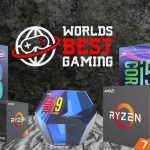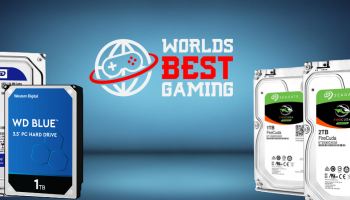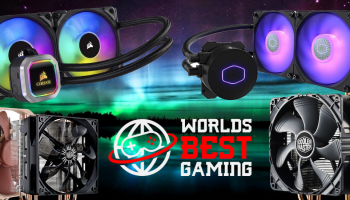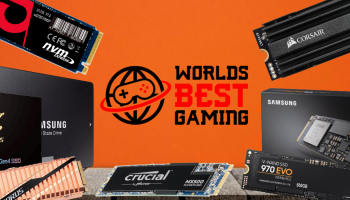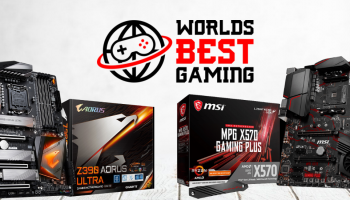Best GPU’s of 2021
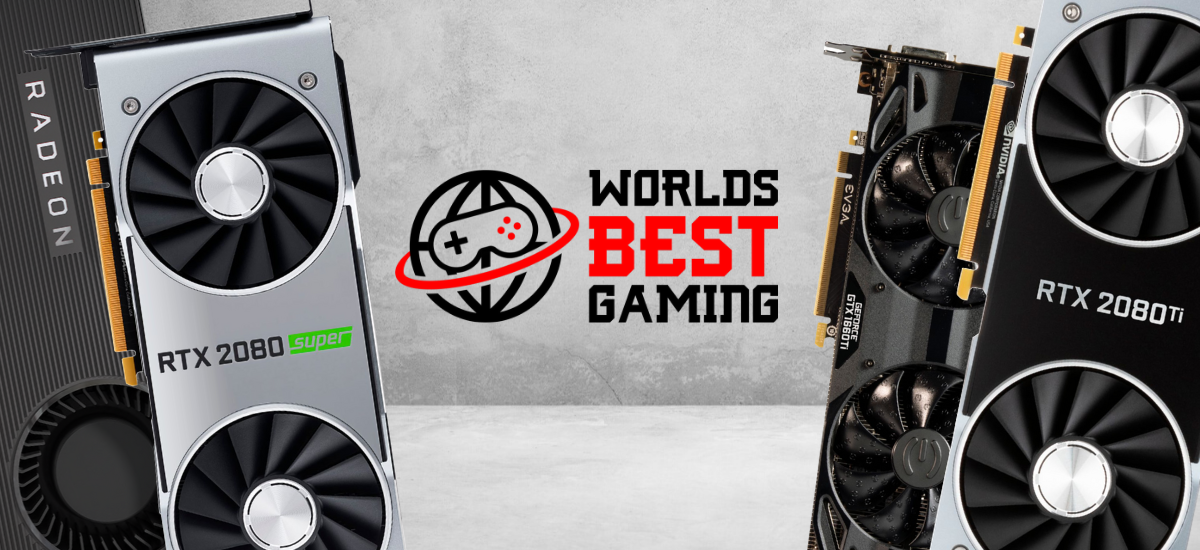
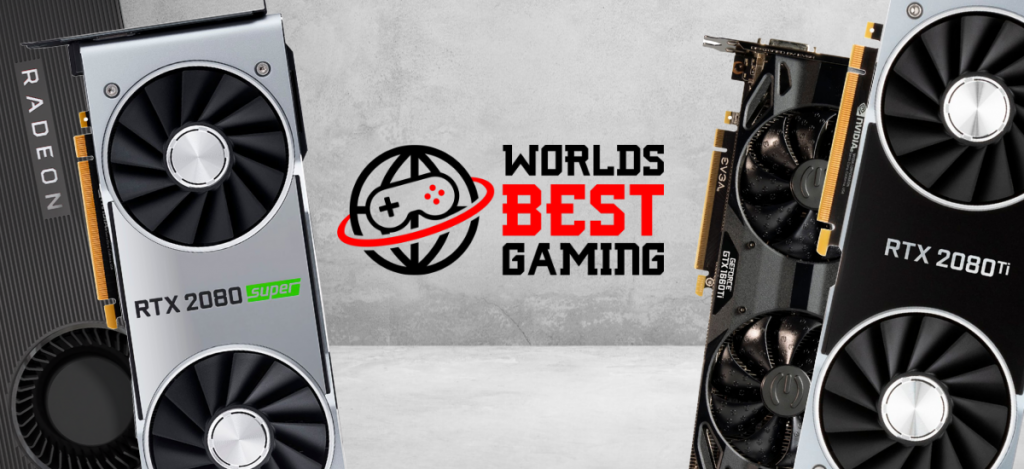
When piecing together a new gaming rig, one part is king above all the others, the GPU. And this one part is also king of sucking the life out of your wallet. Although we can’t help the financial pain, Worlds Best Gaming Guide to GPUs will help alleviate the mental strain of selecting your PC’s new workhorse. As always, our WBG guides are from gamers who actually dabble in PC Gaming. No nonsense or fluff, we’ll let you know just how devastatingly disappointing some products can be! Fortunately, Graphics Cards are almost always the sugary dessert of PC Building and a blast to pick up.
Compared to other parts, Graphics Processing Units are fairly simple to select from. Currently, only two real major GPU manufacturers exist and control the market and they’ve cut the market up into very manageable specific budgeted chunks. If you are overwhelmed at selecting a new card or just want to know more about them, skip down to our tech section where we walk you through all the important aspects of Graphics Cards and answer whether or not your old GPU is ready for hospice.
What should I have in mind as a goal for a new GPU?
A new GPU should be enough to play today’s AAA games and ideally get you a framerate between 30-60 FPS at your target resolution. That being said, if you aren’t hitting 60 FPS at 1080p in most modern games, you probably need to throw a little more money into your PC. It’s just not long for this world.
Note: GPUs are designed by Nvidia or AMD but then manufacturers add other features such as cooling, overclocking, paint jobs, and more. To construct our list we looked at numerous performance metrics and went ahead and suggested the base model of product lines but will include a link to one model that particularly stood-out.
OUR PICK – RTX 2080 Super
The (Probably not) Champion of GPU’s
- 1440p way above 60 FPS
- Best Price for 4K Gaming
- Ray-Tracing and DLSS
- Gets to the edge of a solid 60 FPS at 4K
- Nvidia may release RTX 30 series this year
Who is it for?
The 4K enthusiast
Our Take
Such a tease! For those dabbling in 4K, Ray-Tracing, and DSLL, the GTX 2080 Super is the best balance of price and performance for this generation. But there is an awkward thing we need to get out of the way first. It’s not a paradigm shift. It’s completely fine. It’s a fine, fantastic card, but if you’ve purchased a 1070 or 1080 in the last few years, it’s just not the time to upgrade. Several online reviews have taken offense that Nvidia has released quite a few cards that just don’t push the envelope but like Apple products, some generations have iterations with minor upgrades. This is superior to the GTX 1080, adds ray-tracing and other sick features. It’s an AWESOME card, but it didn’t reinvent the wheel. And we are ok with that. It also gets frustratingly close to smooth 60 FPS 4K but lags behind in some titles already. It’s just one step below the 4K card of our dreams but it’s one of the best balances of price and strength Nividia can offer until the RTX 30 series.
Those looking for a new GPU will freaking love the RTX 2080 Super. Those trying to squeeze more power out by upgrading that hot off the press RTX 2080 for the RTX 2080 Super won’t love this.
This is the card for that 4K loving gamer who wants every setting at ultra. It has Ray-Tracing and other nifty Nvidia features but ultimately it just kicks the competition in the teeth. Short of upgrading to the 2080 Ti, there isn’t a card in this range that really can hold water to the 2080 Super. It’s also in that really good price range for those planning to go all in on a 4K rig and get some future-proofing as well.
A well-priced fresh 2080 super is this one from EVGA
Expect Unlimited POWAAAAAAH or in layman’s terms, most games will run around 60 FPS at 4K on ultra. You’ll still struggle though when trying to push the envelope on ungodly sized open-world games like Red Dead Redemption 2.
back to menu ↑
RUNNER UP – AMD RX 5700 XT
- 1080p well above 60 FPS
- Can handle 1440p swimmingly
- Best AMD card in years and fantastic price point
- Not adept at Ray-Tracing
Who is it for?
Those who want to play 1080p primarily and hit 60 FPS in 2K for a the next year or longer
Our Take
AMD lagged behind for several years with really depressing and uncompetitive releases but finally pulled off some wins in late 2019. The RX 5700 XT is our runner-up for a variety of reasons. Some of us who loved Radeon have been chomping at the bit to get another crack with an AMD GPU but it just wasn’t the smart choice, the RX 5700 XT shows that AMD is gunning for Nvidia and finally bringing the fight back for them.
Firstly, price. The 5700 XT is one of the best values around. Clocking in at several hundred less than the RTX 2080 Super and shaving off around hundred from the RTX 2070 Super, the RX 5700 XT makes Nvidia sweat to justify the increased price.
Secondly, performance. This is the card you want if you have a 1080p budget but still can’t get away from 1440p. This is the perfect 1440p card and it doesn’t break the bank. It’s sort of the card between the RTX 2060 and RTX 2070, but it is priced out similar to the RTX 2060 meaning you’ll usually see modest performance gains. The RX 5700 XT can get around 25 percent more performance in several games meaning you just should naturally gravitate toward it over the 2060 Super. Faster, often cheaper, and just a good product.
Keep in mind AMD uses slightly different technology than Nvidia meaning that some games will have a modest boost and others will lag behind. This is pretty common and used to be most often seen with DirectX implementation in different card generations. If you have a favorite game series, it’s always good to check if they lean on the AMD or Nvidia side of the aisle. One of the big weak points in AMD products is the current Ray-Tracing ability. It just doesn’t have the strength of the dedicated Tensor Cores.
The RX 5700 XT is a great 2K gaming option and we like this version here.
back to menu ↑
BUGET GPU (1080p) – GTX 1660 Ti
- Future-proof for 1080p rigs
- Capable of light 1440p gaming
- Will probably age out of the 2K scene quickly
- No Ray-Tracing
Who is it for?
Those who love 1080p gaming and have no aspirations for long-term 1440p content
Our Take
The 1660 Ti is a confusing title for a GPU. It is a product of the GTX 10 series but updated to allow for newer RTX 20 series features and bumped up in power. Then the Ti shows it is an improvement on an entry level 1660 which is already an advanced version of the 1060… it’s basically facepalm levels of product titling at this point.
All you need to know is that this is the go-to card for a gamer who can’t spend a lot of cash on the GPU (Although always prioritize the GPU as that’ll be the first thing to age out). It’s the best price point we can recommend for an entry level budget GPU. It’s not dirt-cheap but it’ll keep your 1080p games running at 60 FPS and future-proof your gaming rig. This is the best 1080p card on the market for the price and good enough for those upgrading an aging machine to squeeze some cheap life out of an old rig for quite awhile.
Truth be told it can play 2K games as well. Regularly exceeding 60 FPS on some of the hottest releases. The problem is that tech moves fast and this probably won’t sustain your 2K gaming long into the future. It also lacks Ray-Tracing for those who really love the new lighting technology.
The GTX 1660 Ti is a beautiful piece of tech but it does have limits. If you aren’t planning on getting a new monitor or have an aging rig, we’d recommend picking this card up right here.
back to menu ↑
MID RANGE GPU (2K) – RTX 2070 SUPER
- 1440p Champion
- All the great RTX features in a card that’ll last
- Light 4K gaming is possible
- Frustratingly close to a good 4K card
- Price isn’t far enough from the 2080 Super to make it an easy pick
Who is it for?
Those who want 1440p gaming above 60 FPS for years to come.
Our Take
The RTX 2070 Super is a mighty fine GPU. Dare say one of the finest in the mid-range market. It’s the ideal 2K card and easily bumps frames up by 20-30 FPS compared to the RX 5700 XT in quite a few scenarios. The 2070 Super is strong enough to lightly game in 4K but you’ll be unable to play games like Red Dead Redemption 2 in 4K without noticing a drop performance.. It is undoubtedly the best 2K card around but does struggle to justify the price difference between the RX 5700 XT and the RTX 2070 Super. We think those wanting 1440p gaming and to sit for a few years without upgrading will love this card.
The 2070 is the mid-range card of the average three tier Nvidia pipeline (2060, 2070, and 2080) and as usual, it offers the best balance of power and price. Once you hit the 1070 or 2070 zone, you’ll start seeing diminishing returns on price. I.E. better cards will probably cost a lot more for less performance than the difference between a 2060 and 2070.
We recommend this wholeheartedly but you might feel a tinge of regret when you ALMOST reach the FPS you want. Really any GPU will do that until 4K gaming is easily done above 60 FPS. No PC ever satisfies the itch of a diehard PC Gamer but it’ll be hard to justify a bump in GPU quality for a couple of years as so much value has been sunk into this card.
The RTX 2070 we selected is from ASUS and has some sweet RGB lighting to boot.
back to menu ↑
PREMIUM DREAM GPU (4K) – RTX 2080 Ti
- This beast of a card annihilates the competition
- 4K gaming above 60 FPS and glorious quality in even Rockstar games
- Really pricey
Our Take
Do you hate money? If that sentence was enough to persuade you to stop considering the RTX 2080 Ti, you never would have bit. This card is exhilarating. It will make you swoon. It knows that, which is why the price is almost double that of a traditional RTX 2080 Super.
Imagine 4K gaming at 60 FPS with games like Red Dead Redemption 2 and you’ll understand what the big deal is with the RTX 2080 Ti. Apart from industry cards or the RTX Titan, few cards can remotely compare to the power of this beast. It also has diminishing returns. We don’t recommend this for people who want the best value. That’s not a bad thing and the RTX 2080 Ti knows it too. It has a target market and that market is those that will puts thousands into bumping performance up by 20-30 percent. At these prices, the gain is not as great per dollar spent. But if you are building the Gaming Rig to end all gaming rigs, that doesn’t really matter, does it? In essence, we can’t recommend this card enough. It’s other-worldly. But it’s hard for us to tell you that the value is worth it unless you personally have a lot of extra walking around money. Just think of this as the card you want if you won the lottery or live for PC Gaming.
Again, this is an amazing piece of tech, but it isn’t the best value you could get. It might just be the best experience though.
If you still want to jump into the deep end, we recommend this GPU here.
Everything you need to know about Graphics Cards
What does a GPU do and what does it not do?
The GPU is one of your most important pieces in a PC build. While many Intel Processors and AMD Processors have an onboard graphics option, they’re terribly weak and used primarily to allow a PC to still function while missing a pretty important component. With onboard graphics, you might as well weld a Game Boy onto your PC or just stick to graphic-intensive games from 1994 (Doom is still pretty popular).
If you want to play modern games on a PC, you need a decent GPU. The GPU will make a far larger difference in what you can play and the quality of your games than the CPU, RAM, and SSD, or anything else. It’s pretty much the core of making games look good. They perform tremendous calculations and operations to simulate the graphics we all love and adore. They also are important for connecting multiple monitors and most modern GPU have Displayport, HDMI, and other form factors for that. Anything graphical most likely will get a boon from a decent GPU and games absolutely require one, with some modern games unable to run on cards just a few years old.
Ultimately the worst performing parts of your system will create what we call a bottleneck. If you have a terrible CPU even an RTX 2080 Ti will be held back considerably . Identifying these bottlenecks is one important thing to consider when making your decision.
What a GPU Upgrade won’t fix
They are however not a one-stop solution to take a terribly slow outdated PC to 4K levels, the GPU can easily be bottlenecked and underperform due to old less powerful components. And while they’re also used for Video Editing with specific software (DaVinci Resolve), some major editing programs such as Adobe Premiere Pro use the GPU rather rarely. Those who stream may think the best upgrade is a beefy GPU, but actually will find the biggest streaming improvement often comes from building a separate PC and getting a nice capture card. This pulls the burden of streaming off of the host machine and works wonders. They won’t make you better at CS:GO either, Graphics Cards can’t instill talent or skill in those who are just bad at shooters.
The Two Major Companies
AMD and Nvidia are known as the two primary GPU manufacturers and have a die-hard fan base for different reasons. They’ve been around for decades and have a lot of brand loyalty. They’re also your two options. Your only options.
AMD
AMD is famous for the Radeon series of GPU and has recently been using the designation RX to notify different generations of GPU’s. They got hammered by Nvidia for several years but found themselves an unlikely winner in the Crypto space as the cheapest and most effective mainline option for mining. AMD has since spent a few years honing and perfecting what they do so that they are once more competitive with Nvidia.
Specific AMD Features
FreeSync and FreeSync 2
FreeSync is a newer monitor technology that pairs your monitor refresh rate with that of the GPU. It makes a dramatic difference for a lot of games and actually removes the need to use some headache inducing technologies like Vertical Sync. FreeSync monitors look smooth as possible and when it comes to graphical fidelity many prefer FreeSync technology to even a resolution boost. Monitors themselves come with this technology but also pair with specific GPUs.
Does gaming on an AMD CPU help my AMD GPU?
Besides anecdotal evidence by those who prefer AMD, there is little to no incentive to pick your GPU based off of your CPU manufacturer. A variety of reasons drive this but in general AMD doesn’t want to lose market share by prioritizing a CPU line to only work with specific GPUs. That being said, the way both companies handle products is different so there are many other factors to consider.
When will AMD get Ray-Tracing Technology?
We cover Ray-Tracing below but it is one of the most unique and impressive technologies emerging in the graphics world. AMD has announced upcoming models will be taking full-advantage of Ray-Tracing and AMD Fan Boys may want to hold out if they value the most realistic lighting effects achieved by mankind since inventing fire.
Nvidia
Nvidia has grown tremendously and become the leader in the GPU market, partially due to some large quality leaps in different generations and additionally due to AMD having a more diverse portfolio focusing on CPU’s and competing with Intel. Nvidia GPU’s are reliable and almost always work flawlessly with modern games. They’re just a solid choice. Some unique Nvidia features are the RTX design allowing Ray-Tracing and the unique graphic settings like DSSS
Founders Edition Cards
One of our favorites designs in recent years has been the Nvidia Founders Edition models, they’re hearty and have a bit of weight at a slight additional cost. They are made from premium materials but be aware that your GPU is already expensive enough that premium materials shouldn’t be what pushes you over the edge. We do think they are just great looking, solid beasts of a GPU but ultimately they are more of a cosmetic upgrade if you don’t plan on overclocking.
The GTX 10 series versus the RTX 20 series
Nvidia had one of the most successful GPU product lines of all time in the last few years with the GTX 900 series and the following GTX 10 series. These cards nailed the price by giving exceeding value for each card while still being affordable for the average consumer. Recently Nvidia followed up with the RTX 20 series and is rumored to be producing RTX 30 series relatively soon. Nvidia has actually released quite a few products in the last couple years meaning that the market is beginning to experience Nvidia fatigue.
Specific Nvidia Features
Tensor Cores
These new ai driven cores allow Nvidia to do all the nifty Ray-Tracing and DSLL features of this generation. It’s a unique tech only they have so far.
RTX
RTX or Real-time Ray-Tracing is an amazing technology, some have called it the Holy Grail of PC Graphics. Simply put, light in most games is painted onto a scene or dynamic but doesn’t actually simulate things the way real light does. Real light is messy, with particles bouncing off surfaces and diffusing to make complex lighting situations. If you’ve ever seen terrible reflections while gaming, shadows that don’t look natural, mirrors that don’t even reflect, these are things that RTX fixes. And the change is stunning. Materials that affect light pop and darkness can be used much more effectively, simulating natural light. That being said, few games have really taken the RTX leap. This is natural during transition times with new technology. Some like Minecraft have shown amazing results while old retro games like Quake II look stunning when RTX is enabled, this new technology is powerful and hopefully becomes a standard soon.
Cuda Cores
This strange acronym stands for Compute Unified Device Architecture. These number in the hundreds and thousands and are found in Nvidia products. They’re similar to very small, less powerful, processors. They allow the GPU to do large amounts of calculations quickly and the basic rule is that more is better. This gets into more complex aspects such as parallel computing. Just know that they’re pretty nifty for making things run smoothly with graphics, ai, and more.
G-Sync
G-Sync can basically stand-in for the word FreeSync used earlier with AMD. Very similar technologies.G-Sync is a newer monitor technology that pairs your monitor refresh rate with that of the GPU. It makes a dramatic difference for a lot of games and actually removes the need to use some headache inducing technologies like Vertical Sync. G-Sync monitors look smooth as possible and when it comes to graphical fidelity many prefer G-Sync technology to even a resolution boost. Monitors themselves come with this technology but also pair with specific GPUs.
Why do all these new models add numbers and the word Super?
GPU’s tend to develop over the course of a product’s lifespan. As such, Nvidia has rereleased some RTX cards and GTX cards with significant upgrades. Super just means that they bumped the power up and added some additional value. An additional number in the GTX 10 Series though is quite unique, it means they added RTX technology now allowing the card to do Ray-Tracing without bursting into flames. These cards are affordable, powerful, but often can’t hold a candle to the RTX 20 series.
Founder’s Edition Models
Nvidia has created high-quality versions of the recent RTX 20 and GTX 10 lines known as Founder’s Editions. They have much higher components and are premium in design. The price bumps up a bit but you have the guarantee of knowing it came straight from the head honcho themselves.
Features universal to GPUs
The nm or Nanometer
Electronics are built today smaller and smaller and that means cramming as many components as possible into as small a space as possible. The most common metric is the nanometer and modern cards are getting so small that they may have to change how we fundamentally do graphics to get better returns on power. With AMD and Nvidia, you’ll hear about what type of nm process they used and generally, it’s a good indicator of how good a part is (Smaller is better) but the jury is out on what the best upcoming cards will be like.
VRAM
Most GPU’s have between 2GB and 8GB of RAM. Newer models or industry models can easily exceed this as well.
Clock Speed
Similar to MHz or GHz, this shows how fast a particular card processes and gives you a feel for how powerful it is. Most Card manufacturers off an overclocked version of cards but be wary that few boost performance that much beyond the stock settings and increase heat tremendously.
Form-Factor
GPU can come in a full-size and a mini size for smaller builds. This generally doesn’t affect the performance of the card at all but it does affect cooling, physical space, and one has to question how so much power shrinks so small. Larger cards may be so big that a new case or Mobo configuration is necessary so be aware of that if you want a top of the line GPU.
Available Ports
Today all cards will have several HDMI or Display Ports but double-check to make sure it supports your monitor and if you are using a VGA monitor, get with times!
F.A.Q.
What should I avoid when purchasing a Graphics Card?
Don’t buy in too old or too cheap to save a little bit of cash. Buying a new GPU shouldn’t be done lightly. It’s one of the larger purchases for a PC and buying too cheap or older tech generally means that you’ll need to replace it soon. Why spend several years with a frustrating experience only to then purchase something that will soon devolve back into a frustrating experience?
Should I use SLI or CrossFire?
SLI and CrossFire refer to the various technologies that strap cards together to work in the same machine. These cards usually need to be the same model but CrossFire has had some success overcoming this. The reality is that the boost in performance is not a true doubling and often lower than a 50% bump in quality. Some games won’t even use SLI or CrossFire as they are prudish and believe in one card for life. Additionally buying multiple cards and stringing them together is pricey. And pricey enough that you can usually upgrade to a better card short of the Titan V. Some swear by it but it’s rare that we’ve seen this work out well. Our advice is to not dabble with two cards unless you really love having frustrating experiences fixing your build and just hate having all that extra money.
This (Insert Blank) GPU has water-cooling, lights, is overclocked, shoots lasers etc. is it worth it?
Your GPU is designed from a specific company like Nvidia, then the manufacturers produce and build unique versions that they feel will appeal to a specific audience. If you want the best of the best, an overclocked card with unique cooling may be right up your alley. We personally wouldn’t waste our time letting that be the guiding decision though. The amount of gameplay difference you get from overclocking maybe just a couple frames per second but companies often increase the price by a $50 to $200 for a fancy GPU. Usually, that means it’s wiser to buy a standard GPU and just invest the extra funds into your build. The return on investment drops dramatically when you use overclocking. For the gold eating hyper-rich crowd, it might make sense, but wouldn’t you rather just have a Titan V or whatever nifty card Pixar is dabbling with?
Do I need more than 60 FPS?
This question is far more controversial than most would realize. Clearly, if you want to sell monitors and graphics cards, it makes sense that you would argue the necessary need for more FPS. That being said, several trials have shown higher frame rates may help players game better. Using G-Sync and hitting higher frames theoretically could improve your gaming if the characters are appearing sooner. It’s still not going to make you into Ninja overnight and no replacement for actual skill. The most important reason to go above 60 FPS is that it adds immense smoothness to gameplay and keeps you from jarring visual artifacts. The human eye can’t see above 60 FPS easily (Some can) but below 60 FPS you may start noticing a quality change. 30 FPS can still be great though, for example, modern film uses 24 FPS so it’s not a total loss as long as you are absolutely stable at 30FPS.
I want to buy (Insert GPU), how many more frames will I get?
Games are so specific that this question is difficult to answer. Some games will get a huge boost, others may not see as much of a bump in quality. It also depends on how a game has been developed. Some games literally run better with AMD or Nvidia even on worse quality components. Because of this, it’s best to look at some FPS charts online for the games or genre you most likely will be playing a lot.
Should I use this card for Crypto Mining?
Without getting into all the complexities of mining, don’t. Just don’t do it with your gaming PC. For graphics cards, it’s the equivalent to running a marathon and then repeating immediately afterward until it dies. Mining just decimates graphics cards and you don’t want that abuse happening in your PC Rig. It also creates a ton of excess heat and uses a lot of energy. That’s not to say don’t mine, just do it separately from your precious Desktop PC.
Thanks for Joining Us!
We hope that this guide has answered those burning GPU questions that wake you up with a cold sweat in the middle of the night. Or at least helped you pick something that isn’t going to be a potato by 2021. Buying a GPU is one of the best and most exciting steps in building the PC Gaming Machine of your dreams or updating that old sagging blob of a desktop you’ve been neglecting for far too long. If you are on the fence about upgrading, maybe think about how much gaming is a hobby for you. How often do you do it? Would you rather maximize the enjoyment of those hours or struggle through with an old build? Everyone is different but nothing beats slapping a new GPU into that gaming rig!
We appreciate you checking out WBG, keep coming back for more content by gamers and for gamers.







